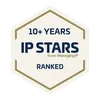Safeguarding your IP at Conferences, Exhibitions and Events

As the Autumn conference season is about to start, we thought it useful to take time to think of some simple steps you can take to safeguard your IP at conferences, events and exhibitions. Are you planning on attending an exhibition/conference (and possibly discussing your technology with others there) or even exhibiting any new technology at or related to the show which has not yet been covered by a patent application?
As you know, if you disclose new technology without filing a patent application then your rights to the IP can be lost. If you have recent developments in relation to any existing technology or new technology that you are likely to be disclosing, we strongly advise that you discuss this with your Patent Attorney as soon as possible, in order to determine whether your present portfolio covers these developments or whether additional protection should be obtained before the show opens.
We are also finding more and more copies of tools being presented at shows by competitors, which might infringe your IP rights. So it might also be useful to check that you are clearly marking your products and literature correctly to maximise the effectiveness of your IP against competitors. There are a couple of easy steps you can take to improve your position, and a couple of pitfalls you will want to avoid.
What you should do to safeguard your IP at conferences and events: #
- Who are your main competitors? Locate their stands and make sure that you check early on the first day to see if they are exhibiting any offending products.
- If you’re aware of any competitor products that are possibly copying your ideas, then it may be possible to take action to stop those competing products appearing at the show. Locate their stands and make sure that you check early on the first day to see if they are exhibiting any offending products. Often exhibitors will indicate which tools will be appearing at the exhibition, so it’s possible to do a lot of the groundwork in assessing any infringement before the show starts.
- Mark your patent numbers on literature, posters etc. and on your tools if that’s practical. Broadcasting the fact that you have taken steps to protect your IP can make it less likely that you will be copied. If you can’t mark the whole number on the tool, then it’s often useful to mark a web address on the tool or the packaging where the relevant patents are listed.
- Making sure that your Trade Marks have been searched and cleared and that the significant Marks have been registered before the show is also very important.
- If you do see any copies and want to take action for infringement, then you will want to be careful how you raise the issue. It can be tempting to march up to the infringer’s stand and issue ultimatums, but in many jurisdictions (and the UK is one of those) issuing threats of IP infringement, even if you have a granted patent, is actionable if you make the threats in a certain way. There are “safe” ways of making those threats, but many people fall foul of these provisions because they are surprised about what can constitute a threat. Speak to us about this before anyone approaches the infringer and we can help you avoid those risks.
If you’ve had any letters from competitors about any of your products, then it’s important to assess the risks of infringement for any products you’re intending to exhibit in good time before the show. Exhibitions often spark off complaints of IP infringement, so if there has been any hint of this it can be useful to take action. Caveats can be filed to give you prior warning of applications for injunctions made against you (at least in Scotland), and this is a really useful way of ensuring that you get the chance to argue the issues in front of a court before any court order is made.
If you are aware of any possible risks of infringement, it’s important to consider issues like whether there are defences you can make to infringement allegations, and whether the competitor IP is subject to an invalidity attack. Again, looking at those issues before the show opens is very important.
Get In Touch!
We hope your upcoming conferences are successful and enjoyable. If we can provide any further information or assistance on your IP at conferences, exhibitions and events, please do not hesitate to contact us.
As the Autumn conference season is about to start, we thought it useful to take time to think of some simple steps you can take to safeguard your IP at conferences, events and exhibitions. Are you planning on attending an exhibition/conference (and possibly discussing your technology with others there) or even exhibiting any new technology at or related to the show which has not yet been covered by a patent application?
As you know, if you disclose new technology without filing a patent application then your rights to the IP can be lost. If you have recent developments in relation to any existing technology or new technology that you are likely to be disclosing, we strongly advise that you discuss this with your Patent Attorney as soon as possible, in order to determine whether your present portfolio covers these developments or whether additional protection should be obtained before the show opens.
We are also finding more and more copies of tools being presented at shows by competitors, which might infringe your IP rights. So it might also be useful to check that you are clearly marking your products and literature correctly to maximise the effectiveness of your IP against competitors. There are a couple of easy steps you can take to improve your position, and a couple of pitfalls you will want to avoid.
What you should do to safeguard your IP at conferences and events: #
- Who are your main competitors? Locate their stands and make sure that you check early on the first day to see if they are exhibiting any offending products.
- If you’re aware of any competitor products that are possibly copying your ideas, then it may be possible to take action to stop those competing products appearing at the show. Locate their stands and make sure that you check early on the first day to see if they are exhibiting any offending products. Often exhibitors will indicate which tools will be appearing at the exhibition, so it’s possible to do a lot of the groundwork in assessing any infringement before the show starts.
- Mark your patent numbers on literature, posters etc. and on your tools if that’s practical. Broadcasting the fact that you have taken steps to protect your IP can make it less likely that you will be copied. If you can’t mark the whole number on the tool, then it’s often useful to mark a web address on the tool or the packaging where the relevant patents are listed.
- Making sure that your Trade Marks have been searched and cleared and that the significant Marks have been registered before the show is also very important.
- If you do see any copies and want to take action for infringement, then you will want to be careful how you raise the issue. It can be tempting to march up to the infringer’s stand and issue ultimatums, but in many jurisdictions (and the UK is one of those) issuing threats of IP infringement, even if you have a granted patent, is actionable if you make the threats in a certain way. There are “safe” ways of making those threats, but many people fall foul of these provisions because they are surprised about what can constitute a threat. Speak to us about this before anyone approaches the infringer and we can help you avoid those risks.
If you’ve had any letters from competitors about any of your products, then it’s important to assess the risks of infringement for any products you’re intending to exhibit in good time before the show. Exhibitions often spark off complaints of IP infringement, so if there has been any hint of this it can be useful to take action. Caveats can be filed to give you prior warning of applications for injunctions made against you (at least in Scotland), and this is a really useful way of ensuring that you get the chance to argue the issues in front of a court before any court order is made.
If you are aware of any possible risks of infringement, it’s important to consider issues like whether there are defences you can make to infringement allegations, and whether the competitor IP is subject to an invalidity attack. Again, looking at those issues before the show opens is very important.
Get In Touch!
We hope your upcoming conferences are successful and enjoyable. If we can provide any further information or assistance on your IP at conferences, exhibitions and events, please do not hesitate to contact us.




















